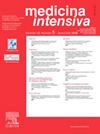Prácticas de analgosedación y delirium en pacientes críticos de la región Panamericana e Ibérica y factores asociados a la sobresedación tras la pandemia COVID-19: resultados del estudio PANDEMIC
IF 3.1
4区 医学
Q2 CRITICAL CARE MEDICINE
引用次数: 0
Abstract
Oversedation has adverse effects on critically ill patients. The Analgosedation and Delirium Committee of the FEPIMCTI (Pan-American and Iberian Federation of Critical Care Medicine and Intensive Care) conducted a cross-sectional study through a survey addressed to ICU physicians: PANDEMIC (Pan-American and Iberian Study on the Management of Analgosedation and Delirium in Critical Care [fepImCti]).
Hypothesis Worsening of these practices in the course of the pandemic and that continued afterwards, with further oversedation.
Objectives
Perception of analgosedation and delirium practices in Pan-American and Iberian ICUs before, during and after the COVID-19 pandemic, and factors associated with persistent oversedation after the pandemic.
Of the 1008 respondents, 25% perceived oversedation after the pandemic (95% CI: 22.4-27.8). This perception was higher in South America (35.8%; P < .001). Main risk factor: habit acquired during the pandemic (adjusted OR [aOR]: 3.16; 95% CI: 2.24-4.45; P < .001). Main protective factor: delirium monitoring before the pandemic (aOR: 0.70; 95% CI: 0.50-0.98; P = .038).
The factors identified in this study provide a basis for targeting future interventions.
泛美和伊比利亚地区关键患者的镇痛和谵妄做法以及与2019冠状病毒病大流行后过量用药相关的因素:大流行病学研究结果
过度镇静对危重病人有不良影响。FEPIMCTI(泛美和伊比利亚重症监护医学和重症监护联合会)的镇静和谵妄委员会通过一项针对ICU医生的调查进行了一项横断面研究:PANDEMIC(泛美和伊比利亚重症监护镇静和谵妄管理研究[FEPIMCTI])。假设这些做法在大流行期间恶化,并在大流行之后继续恶化,并进一步过度镇静。目的了解COVID-19大流行前、期间和之后泛美和伊比利亚icu的镇痛镇静和谵妄做法,以及大流行后持续过度镇静的相关因素。在1008名受访者中,25%的人在大流行后感到过度镇静(95%置信区间:22.4-27.8)。这种看法在南美洲更高(35.8%;P & lt;措施)。主要危险因素:大流行期间养成的习惯(调整后的OR [aOR]: 3.16;95% ci: 2.24-4.45;P & lt;措施)。主要保护因素:大流行前谵妄监测(aOR: 0.70;95% ci: 0.50-0.98;p = .038)。本研究中确定的因素为未来的干预措施提供了基础。
本文章由计算机程序翻译,如有差异,请以英文原文为准。
求助全文
约1分钟内获得全文
求助全文
来源期刊

Medicina Intensiva
CRITICAL CARE MEDICINE-
CiteScore
2.70
自引率
20.00%
发文量
146
审稿时长
33 days
期刊介绍:
Medicina Intensiva is the journal of the Spanish Society of Intensive Care Medicine and Coronary Units (SEMICYUC) and of Pan American and Iberian Federation of Societies of Intensive and Critical Care Medicine. Medicina Intensiva has become the reference publication in Spanish in its field. The journal mainly publishes Original Articles, Reviews, Clinical Notes, Consensus Documents, Images, and other information relevant to the specialty. All works go through a rigorous selection process. The journal accepts submissions of articles in English and in Spanish languages. The journal follows the publication requirements of the International Committee of Medical Journal Editors (ICMJE) and the Committee on Publication Ethics (COPE).
 求助内容:
求助内容: 应助结果提醒方式:
应助结果提醒方式:


